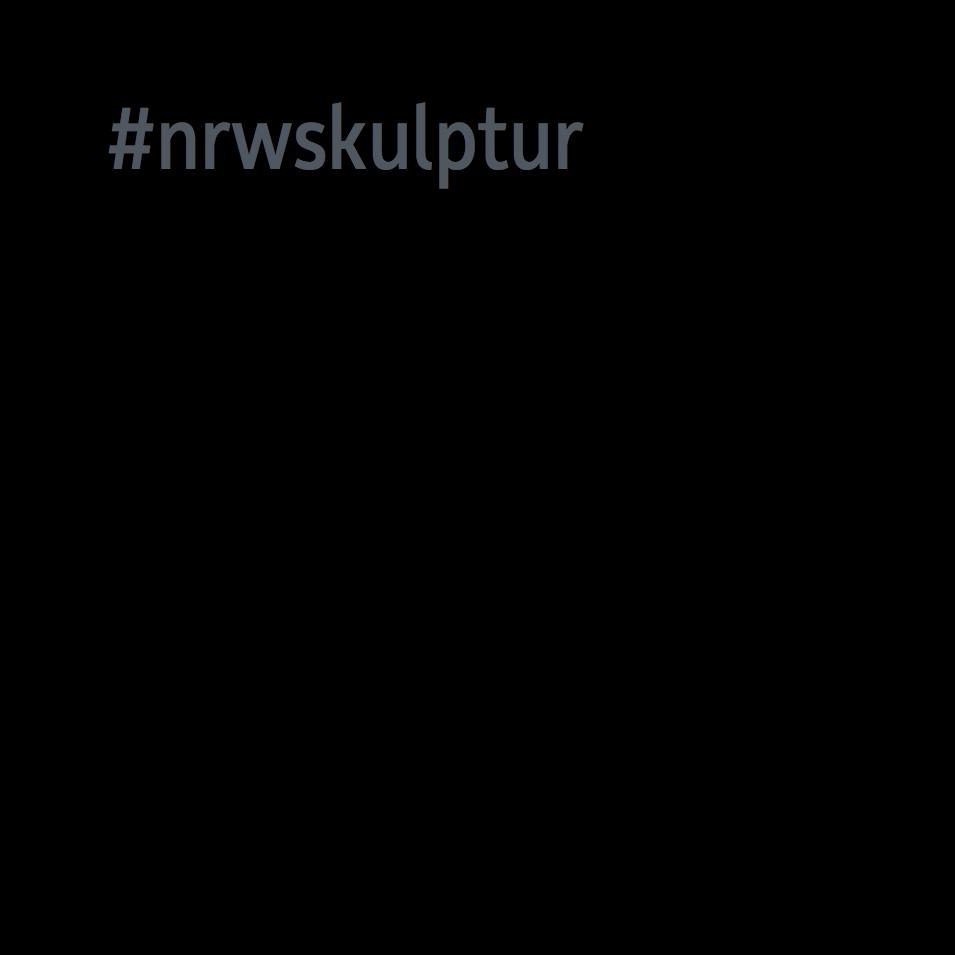Relocation of the Sculptures Knecht mit Pferd / Farmhand with Horse and Magd mit Stier / Maid with Bull

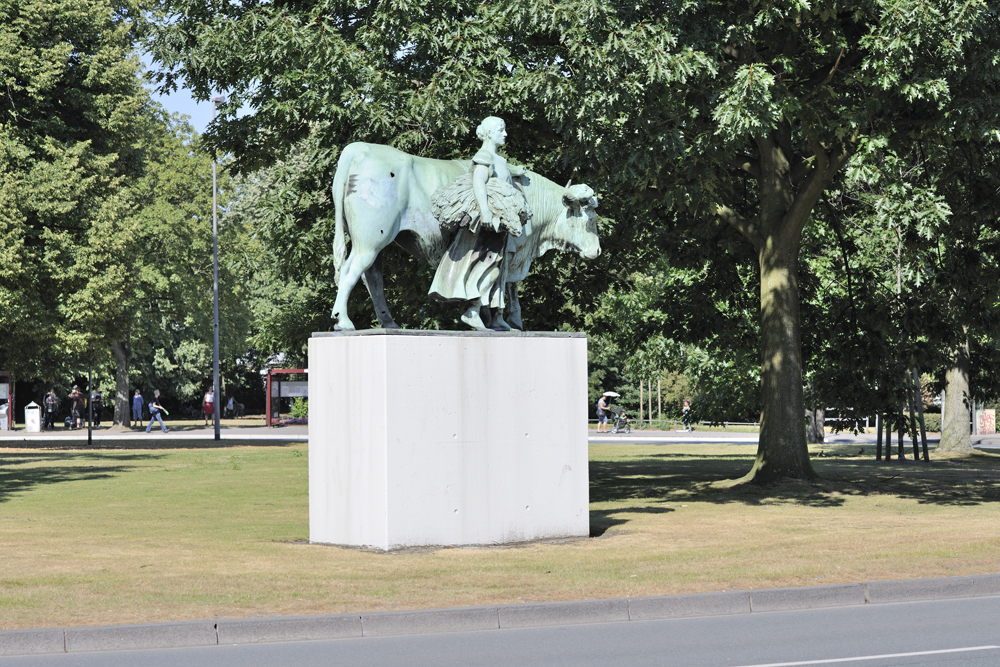
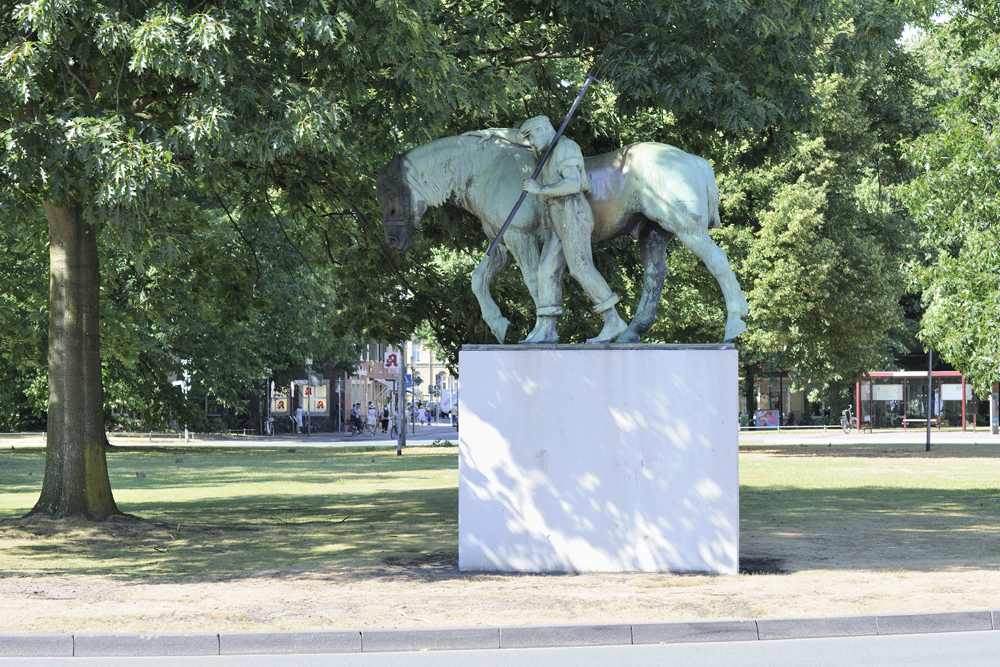
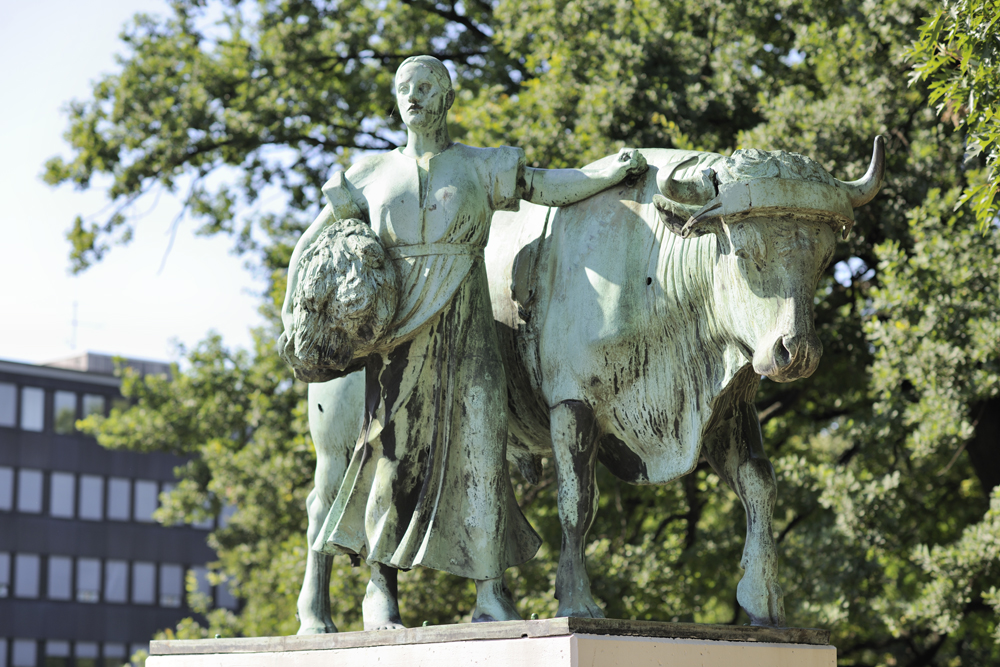
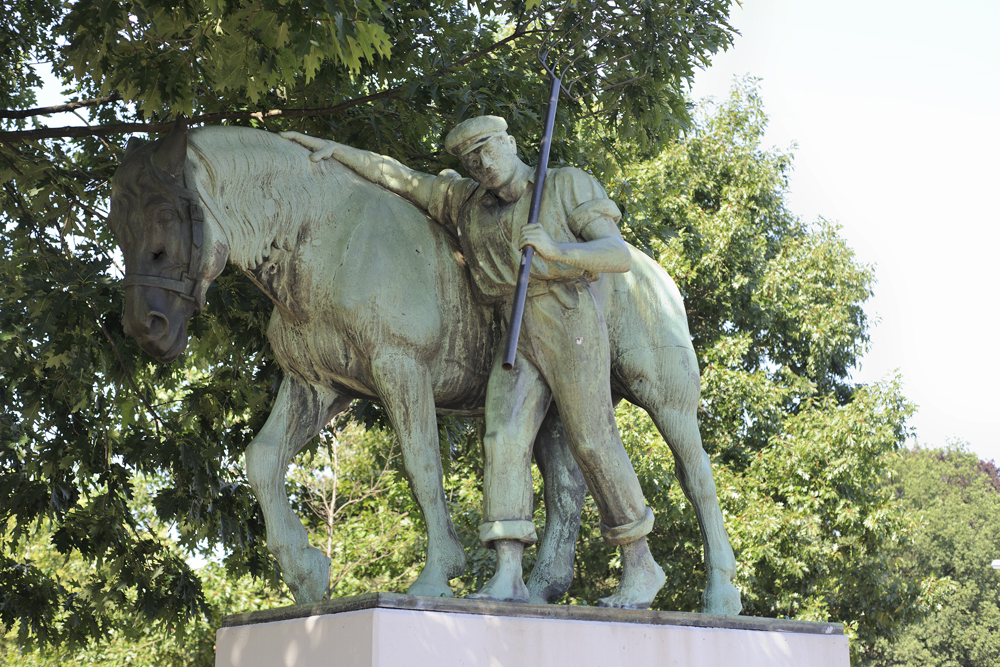
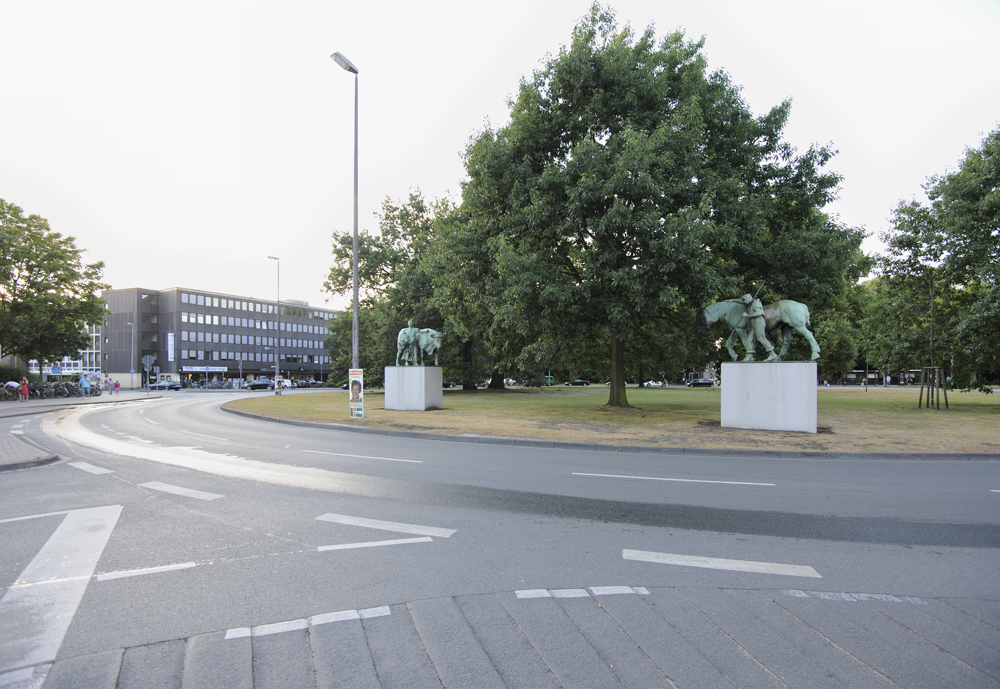
Rémy Zaugg explored contemporary art in a variety of ways. He collaborated with the architects Jacques Herzog and Pierre de Meuron, wrote publications, and curated exhibitions, but he did not create any sculptures in the traditional sense: “The state of my search, my reflections, and my consciousness forbid me to create any objects or to erect a monument in a city. That would mean once again following arbitrary artistic or individual whims and imposing a private phantasm on people,” he explained in the catalog for the 1987 Skulptur Projekte (pp. 262-263).
Instead, he suggested that a group of sculptures from 1912 be reassembled in a way that most closely corresponded to their original intention. The larger-than-life bronze Magd mit Stier / Maid with Bull and Knecht mit Pferd / Farmhand with Horse were originally positioned to greet the rural population at the entrance road to the city, but in the 1960s they were taken off their pedestals and moved to a less trafficked location in front of the Stadthaus.
In 1986, when Rémy Zaugg visited the city for the planning of the Skulptur Projekte, the statues were standing unloved and unnoticed in the middle of a construction site – a situation that Zaugg found paradoxical: they were commissioning new sculptures from artists, while the existing objects were left to decay.
He therefore proposed that his contribution to the Skulptur Projekte be to return the bull and horse to their pedestals and reposition them according to their original placement. Of course, as the circumstances, society, and even traffic conditions changed over time, the sculptures also saw shift in meaning.
Further reading:
Skulptur-Projekte 1987 in Münster, ed. by Klaus Bußmann and Kasper König, Cologne 1987, pp. 261–270.
Rémy Zaugg
← Zur Startseite
Münster, traffic circle at Ludgeriplatz
